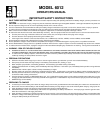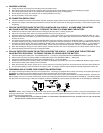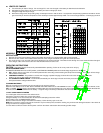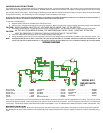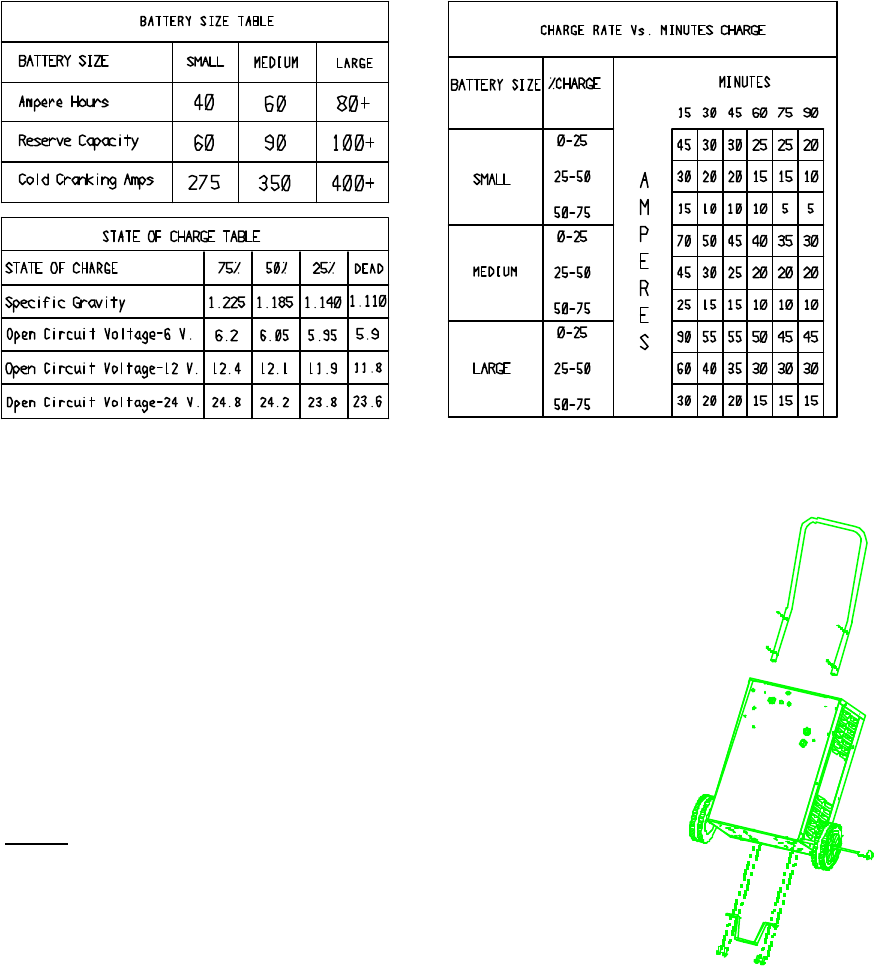
3
20.
LENGTH OF CHARGE
a. Test the battery for state of charge. Do not charge if it is over 75% charged or the battery is determined to be defective.
b. Set beginning amps charge rate for size of battery and state of charge per charts
c. Charge for length of time per charge,
d.
Discontinue charge when the specific gravity of electrolyte reaches 1.260 or above. A temperature compensating hydrometer should be used for this reading. Discontinue charge if the battery begins to
gas excessively or when the temperature of the electrolyte reaches approximately 120E
F. Do not overcharge batteries. Overcharging results in excessive water loss and eventual damage to the battery.
ASSEMBLY
INSTRUCTIONS
1. Remove the screws from the back of charger and attach the handle in an upright position with screws provided.
2. Remove the four screws on the bottom toward the front of the charger and attach the leg with the screws provided.
3.
Put one of the axle nut on one side of the axle by tapping the nut on with a hammer. Then slide the axle through one of the wheels and then through the hole
in the charger until it comes out the other end. Put the other wheel and axle nut on.
OPERATING INSTRUCTIONS
CAUTION - This battery charger must be fully assembled before operating. Failure to do so may result in risk of injury.
USE OF INSTRUMENT PANEL:
The MINUTES CHARGE timer has an OFF position, a CONTINUOUS CHARGE position and a timed charge range from 0 to 90 minutes.
a.
OFF - Always make sure the timer is in the OFF position before connecting or disconnecting the clamps from the battery. The charger will not charge
with the timer in this position.
b.
CONTINUOUS CHARGE - This position is used for slow charging or parallel charging, the timer will not shut the charger OFF while in this
position. Do not use this position for fast charging.
c. 0 to 90 MINUTES TIMED CHARGE - The timer will automatically turn the charger off at the end of the pre-set charging time. Turn the
timer past 20 before setting the desired time.
TO CHARGE BATTERIES
Make the connections to the battery per the instructions in the previous sections.
Determine if the battery is 6 or 12 volts. Set the CHARGE VOLTAGE switch to 6/12 LOW CHARGE for a 6 or 12 volt battery. If higher rate is desired, set at 12
MED. or 12 HIGH. DO NOT
charge a 6 volt battery at setting other than 6/12 low.(Damage may occur to the battery.) Turn the timer on and the Ammeter will
show the amount of current delivered to the battery. Length of charge should be per the above chart and instructions.
12 VOLT CRANK ASSIST STARTING
Turn off all lights and accessories in the stalled vehicle.
Connect the charger to battery per previous instructions.
Charge the battery on 12 HI for at least five minutes before attempting to start the vehicle.
Put the switch in the 12 CRANK ASSIST position.
Start the vehicle with the charger connected to the battery. Follow the duty cycle on the unit.
NOTE:
Do not crank the engine more than 20 seconds in any five minute period; excessive cranking may overheat and damage the starter. If the vehicle fails to start, while waiting for the starter to cool, allow the
charger to continue to charge the battery.
Turn the switch to OFF and remove the AC power cord from the electric outlet before disconnecting the DC clamps.



